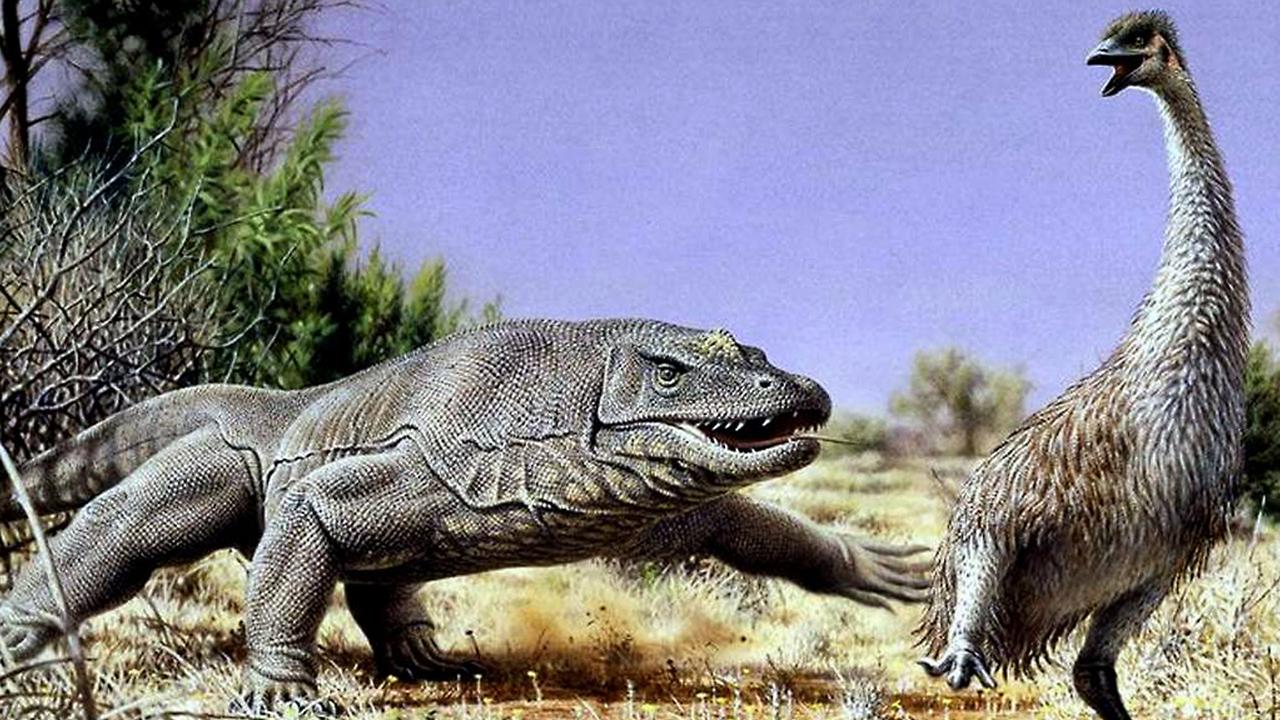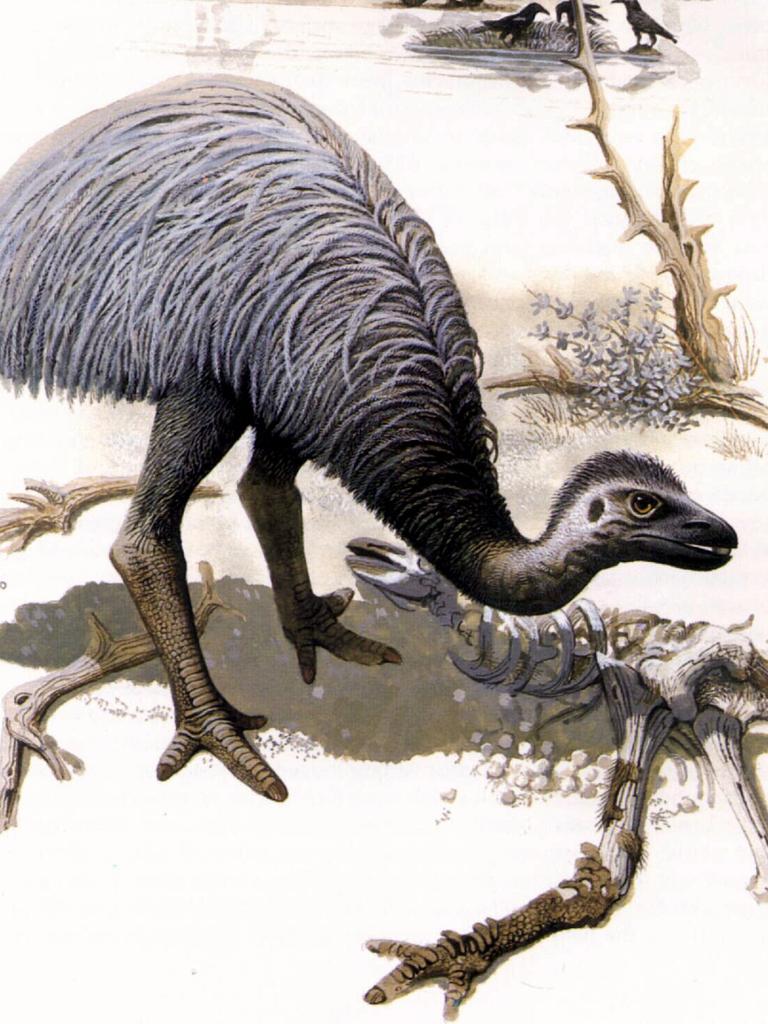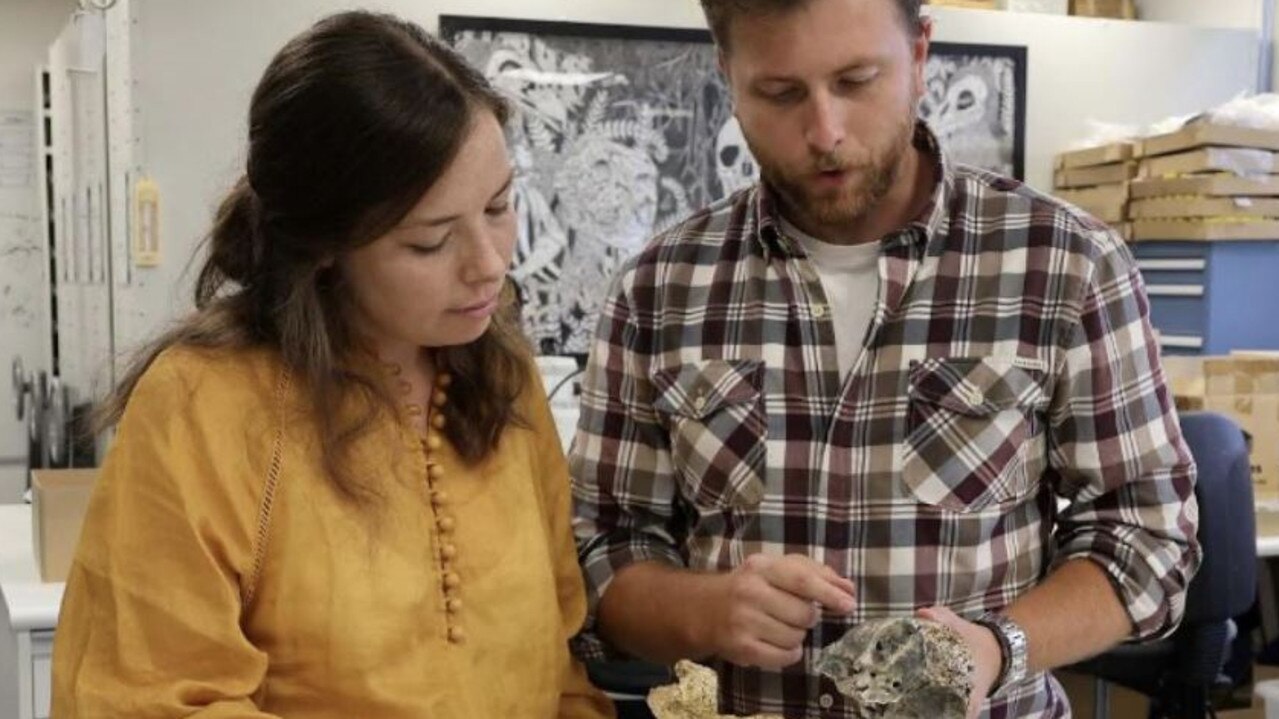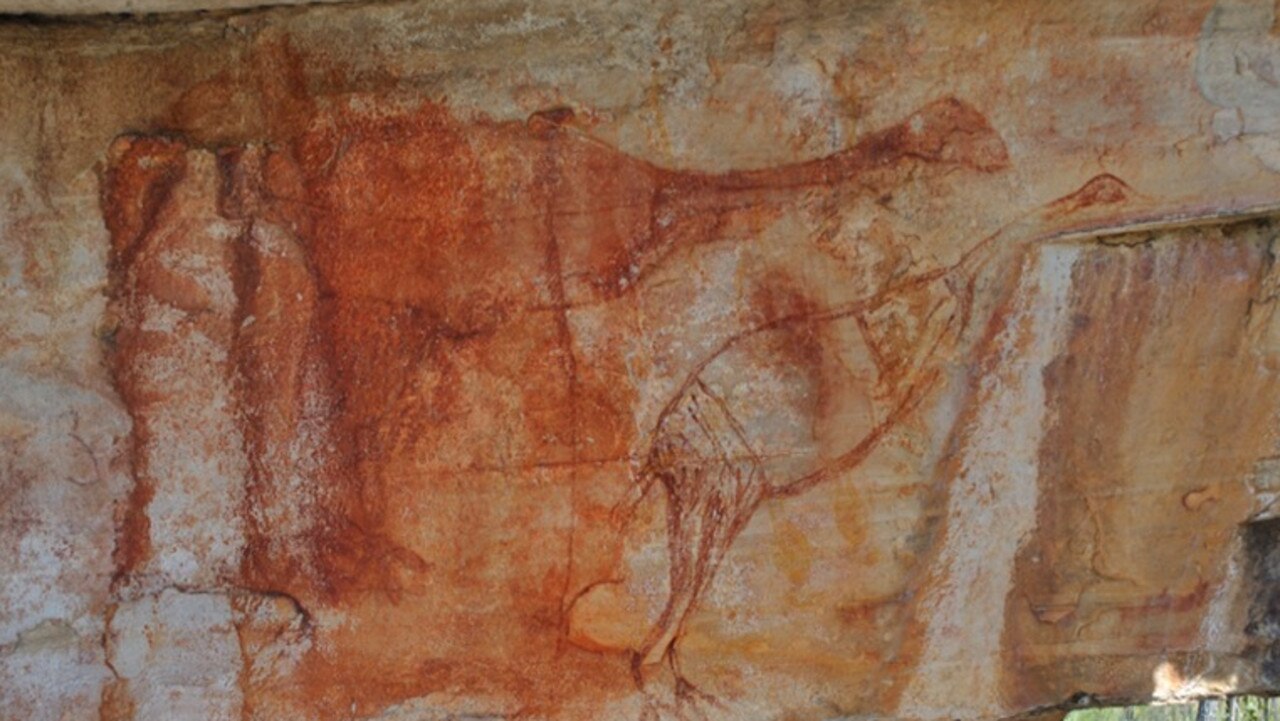Once-in-a-century find sheds light on Australia’s giant prehistoric bird
Partial fossils of a giant 230kg prehistoric bird found in South Australia 45,000 years ago have given scientists clues about the flightless megafauna’s physical structure and appearance

READING LEVEL: GREEN
Researchers from South Australia’s Flinders University have uncovered partial fossils of a 45,000-year-old prehistoric bird in the far north of the state.
The researchers have uncovered the skull of Australia’s own giant megafauna* bird – Genyornis newtoni*, in Lake Callabonna, near the NSW border.
The fossilised skull of these so-called “thunderbirds” is one of two ever discovered, with the first damaged skull being found in 1913.

For the past 128 years, not much has been known about the giant flightless bird.
In a new study published in the journal Historical Biology, researchers from the university have unveiled the physical structure and ecology* of the bird.
“With this new skull, we have started to piece together the puzzle which shows, simply put, this species to be a giant goose,” said researcher Phoebe McInerney.

“For the first time we could put a face on this bird, one very different to any other bird, yet like a goose,” said study co-author Dr Trevor Worthy.
The researchers now know the bird weighed approximately 230kg and lived in an aquatic* habitat.
Genyornis newtoni was believed to have become extinct 45,000 years ago.
From the newly found skull, we now know the Genyornis newtoni have short braincases* and oversized jaws. They are also set apart by a distinctive upper jaw, which gives the bird a unique appearance.
The upper jaw is long and a bit higher than it is wide, with a gooselike, rounded tip and an enclosed palate*.
Highly flexible joints* in the skull allowed the Genyornis newtoni to open its mouth wide, like parrots can, and the arrangement of jaw muscles suggests a higher bite force than originally expected. Powerful muscles attaching to the back of the braincase allowed a strong backwards pull of the head.

The structure of the newly found skull also supports previous ideas about how the species lived. These includes their dietary preferences* for soft, non-fibrous plants* including fresh new growth, shoots and fruit.
Newly discovered facts though, are adaptations* for immersing the head in water, including an enclosed palate, nostrils far back by the eyes, and isolation of the ear from the regions involved in jaw movement. All help to prevent water inflow and limit hearing interference while feeding submerged.
These features indicate Genyornis newtoni was adapted to thrive around swamps, wetlands* and lakes.
GLOSSARY
- megafauna: large or giant animals
- Genyornis newtoni: an extinct species of giant flightless bird that lived in Australia
- ecology: the branch of biology that deals with the relations of organisms to one another and to their physical surroundings
- aquatic: relating to water; living or found in or near water
- braincases: the part of the skull that encloses the brain
- palate: the roof of the mouth, separating the cavities of the mouth and nose in vertebrates
- flexible joints: joints that can move easily and bend without breaking
- dietary preferences: the types of food an organism prefers to eat
- non-fibrous plants: plants that do not have fibres or tough, stringy tissue
- adaptations: changes in an organism that help it survive and thrive in its environment
- wetlands: areas where water covers the soil or is present either at or near the surface of the soil all year or for varying periods of time
EXTRA READING
Prehistoric Tassie species on brink of extinction
Monster prehistoric Aussie plant discovered
'Crazy beast’ prehistoric mammal found
QUICK QUIZ
- What new discovery about Genyornis newtoni did researchers from Flinders University make with the recently uncovered skull?
- Describe the unique physical features of Genyornis newtoni’s skull that set it apart from other birds.
- How did the adaptations found in Genyornis newtoni’s skull indicate its preferred habitat and feeding behaviour?
- Explain the significance of finding a second Genyornis newtoni skull after the first damaged one was discovered in 1913.
- What does the term “megafauna” mean, and how does Genyornis newtoni fit into this category?
LISTEN TO THIS STORY
CLASSROOM ACTIVITIES
1. Summarise the article
A summary is a brief statement of the main points of something. It does not usually include extra detail or elaborate on the main points.
Use the 5W & H model to help you find the key points of this article. Read the article carefully to locate who and what this article is about, and where, when, why and how this is happening. Once you have located this information in the article, use it to write a paragraph that summarises the article.
Time: allow 25 minutes to complete this activity
Curriculum Links: English, Science
VCOP ACTIVITY
BAB it!
Show you have read and understood the article by writing three sentences using the connectives “because’’, “and”, and “but” (BAB).
Your sentences can share different facts or opinions, or the same ones but written about in different ways.
What can you come up with?
Remember to use your VCOP editing skills to read aloud, edit and up-level.

